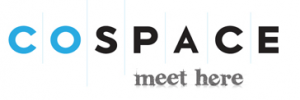
The Internet has restructured our lives. Those in the Internet industry, if you will, can often enjoy working with heightened flexibility- even if that means working around the clock. It’s blurred lines between our professional and personal spaces, while allowing us to have both digital and in real life personas. And perhaps, more than anything, the Internet has enabled us to connect at faster rates, providing us with fertile grounds for collaboration. This is one reason why coworking is such a hot trend.
There are various approaches to coworking and various coworking spaces you should know about. A few months ago, Night Owls Press editors Genevieve DeGuzman and Andrew Tang set out to talk to startups, entrepreneurs, and organizations across the country who work out of coworking spaces or other collaborative workspaces. 33 individuals and 19 coworking space founders including Alex Hillman from Indy Hall, Derek Neighbors from Gangplank and Campbell McKellar of Loosecubes shared their stories in DeGuzman and Tang’s upcoming book, Working in the UnOffice: A Guide to Coworking for Indie Workers, Small Businesses, and Nonprofits [link].
The book is one of the first all-around guidebooks chronicling and analyzing the concept of coworking in the U.S. We interviewed DeGuzman and Tang about their upcoming book, including how to find the right space, tips on adjusting to the coworking environment and mastering the art of networking. Check it out after the jump.

CBM: When did you two start to work out of coworking spaces?
Andrew: We started checking out coworking spaces around the San Francisco Bay Area, where our business is based, in February, attending free events at The Hub, PariSoma, SandBox Suites, Citizen Space.
CBM: What makes you experts in this field?
Genevieve: After a number of years working on economic development projects helping small businesses throughout the Asia-Pacific region, I found myself catching the entrepreneurial bug. Soon after returning to the U.S. in late 2010, I teamed up with Andrew to start Night Owls Press, a small indie digital press and editorial services company based in San Francisco. From my experience with business incubators in developing countries, I’d been personally fascinated with the concept of coworking and had been wanting to start a shared space to bring together the NGO and aid workers with local entrepreneurs. I’m an economist and researcher by training; Andrew used to work in finance– and we wanted to explore the possibilities of coworking as not only a cultural meme, but a real economic driver to get freelancers out of the work rut.
For the uninitiated, coworking isn’t an easy sell. We understand this! As a small business ourselves, we started test-driving a few coworking spaces in the San Francisco Bay Area— but couldn’t make up our minds. We thought about the money we could save by continuing to work at home— and all the other typical excuses. And yet we were torn because we also felt drawn to the dynamic layouts of the spaces we saw: people working at shared and cloistered tables, the bright colors, and the cool décor. Most of all, we loved the energy and the hum: people milling about, talking excitedly with each other while swiveling in their chairs from one desk to another. Oh, and the free coffee on tap, of course.
And then we realized: maybe there were other businesses and freelancers out there with the same dilemma, curious but still hesitant about making the leap— possibly missing out on an amazing opportunity. And so a book project was born.
CBM: Why did you decided to write this book?
Andrew: Since we had just started our business and were small enough, we were both comfortable working out of my apartment in San Francisco, trying to save our money as we got our bearings. But we also felt a bit like marooned people on an island. We started exploring coworking spaces– and doing our research on the options available and making the right choice. There were great resources on Deskmag and Shareable, two online magazines devoted to coworking, but these were usual one-off articles about choosing a space.
So we decided, why not take a crack at writing an all-around guide to coworking that a person starting their search would be able to pick up and get the basics. We also wanted to amass the shared wisdom of dozens of veteran coworkers to get their perspectives, inside tips, and lessons learned. We didn’t want to write a theory of coworking, but the experience of coworking. Like a Lonely Planet of coworking guidebooks!
CBM: Could you share some exciting stats on the state of coworking today?
Genevieve: The growth of coworking spaces around the globe and in the U.S. alone has been phenomenal. Coworking spaces since 2005 have mushroomed in more than 50 countries around the world, numbering more than 64 in the Western U.S. alone. Deskwanted, a coworking marketplace and directory, listed 820 spaces globally as of May 2011, a 17% increase between February and May alone. Deskmag’s latest findings show that coworking’s 380 spaces in North America are thriving— experiencing a 12% growth spurt in the same period. By the end of 2011, experts predict that the number of spaces will increase by 50 percent worldwide, a veritable coworking boom.
What’s a less touted statistic– and more interesting from our perspective watching this trend– is that there’s so much latent interest from people. Deskmag found that 65% of non-coworkers expressed serious interest in coworking. I think this has some serious implications for the future of coworking as it draws interest from outside the pool of the usual freelancers and startups.
Jason Barnett, the founder of TheUptake, a citizen-driven online media organization, told us in an interview for the book that, “Organized coworking environments are ideal workplaces for modern organizations that are interested in partnerships, collaborations, and a healthy work environment.”
 It makes you think about coworking as a movement, rather than just a trend. Coworking can go beyond changing how we work as independents to redefining how we connect to and marshal opportunities for multiple types of organizations.
It makes you think about coworking as a movement, rather than just a trend. Coworking can go beyond changing how we work as independents to redefining how we connect to and marshal opportunities for multiple types of organizations.
Cospace co-founder Kirtus Dixon summarized it this way when he told us: “The magic of coworking is recognizing the opportunity to leverage a space as a hub in an ecosystem of innovation, learning, and support. From that recognition comes the idea of a coworking space as an open-source framework into which multiple entities (entrepreneurs, nonprofits, corporate America, schools, city government, etc.) can plug and play successfully.”
CBM: What cities do you see coworking most successful or most prevalent?
Andrew: So far, coworking has been most successful and popular in denser urban and suburban areas with a high number of people in the high-tech sector (since coworking started from a base of freelance programmers and web-based startups), particularly in San Francisco, New York City, Chicago, Atlanta, and Austin.
CBM: Why the denser, high-tech cities?
Andrew: Mostly because of critical mass– there are more people who would be interested in joining a space in large enough numbers to sustain a space. Jeff Shiau, director of The Hub Bay Area in San Francisco cited the metaphor of density and critical mass to describe the benefits of coworking.
He told us, “You look at these bigger cities, these condensed cities where people are frequently colliding, where people are frequently having to compete against each other. Whether it’s friendly competition or fierce business competition, people are constantly interacting. There is a lot more innovation and creativity in these areas.”
CBM: What cities are on the rise and have the most potential?
Genevieve: Smaller cities that are considered the ‘burbs of urban centers like New York City or San Francisco are becoming hotbeds of coworking. I think bringing coworking into these areas will do wonders in creating pockets of creativity and innovation where they would have the most impact. In fact, rural areas can also benefit. For example, coworking can revitalize a lot of areas that are seeing the out-migration of young people into cities for not only jobs but entrepreneurial activities. If these conditions that coworking provide make it easy to network and collaborate with others, people wouldn’t be so apt to move away. Most people are already working on the cloud; what they’re missing are the people– the community of other entrepreneurs and creative types. Coworking can act as a lightning rod to bring people together.
CBM: It’s so awkward to explain to old people, like my boyfriend’s English parents for example that I work in coworking spaces, several of them or at home. My Father-in-Law to be always says, “Yeah, I call that unemployed.” What advice do you have for explaining the coworking revolution to older generations?
Andrew: In a nutshell: “Coworking” refers to the set-up and dynamics of a diverse group of people who don’t necessarily work for the same company or on the same project, working alongside each other, sharing the working space and resources such as Internet connection, office equipment, and coffee. However, what sets coworking apart from mere shared office space is its focus on building community and collaboration.
And coworking isn’t just for freelancers working for themselves, the chosen ‘self-employed’, but also for those who work in corporate America and want to try remote working options and to telecommute from a coworking space that’s closer to home (but don’ want to feel stuck at home). Many coworking spaces have the support network, the hum and activity, and facilities of a professional work environment. It’s far from the hang-out for the so-called unemployed!
In fact, we see coworking as the natural evolution of work that’s been prompted by the following social and economic factors:
- Shift Toward a ‘Sharing Economy’: It’s akin to say, being able to drive a car when you need to, without the actual burden of ownership, such as paying for maintenance and insurance. The growing trend of prioritizing experiences over material possessions and achieving a work-life balance has also shifted our focus away from ownership.
- Home is Where the Work is: Rise of the Telecommuter and Home-based Businesses. Companies are realizing that employees don’t have to be physically in their workplace to do their jobs; they don’t even have to be in the same time zone. Even traditional, large businesses are recognizing that centralized, management structures need to become more flexible to meet the needs of its employees. The Telework Research Network calculates that telecommuting could save as much as $650 billion dollars a year overall.
- Digital Workers on the Cloud: Technology is redefining the borders of the spaces where we work. We have laptops, iPads, and smartphones. The information and tools we need to work exist in digital form– as apps that function on mobile devices anywhere. Meetings and briefings are less centralized and can be more efficient over chat or Skype with little need for face-to-face time. We don’t necessarily need the traditional office structure to connect with our colleagues and be productive.
- Where Good Ideas Come From: Working with Others: Unexpected insights emerge from the group dynamic. If increasing interaction among different peer groups within a single company could lead to promising results, imagine the possibilities for solopreneurs, small businesses, and indie workers— if only they could reach similar levels of peer access as those experienced by their bigger counterparts. It is this potential that coworking tries to capture for its members.

CBM: What are the greatest benefits of coworking spaces?
Genevieve: At the heart of coworking is being part of a larger community than even your existing colleagues and clients, but also being part of a group of people just starting up or with similar goals. Others might see competition, but more people see potential connections.
One of the selling points of coworking— and something that will be hard to find anywhere else— is the wealth of knowledge that you can get working among a diverse group of people with different skill sets, backgrounds, and experiences. Whether it’s making sense of your website’s HTML, hammering out a killer proposal, or even just making a barista-worthy pot of coffee in the kitchen, you’re bound to encounter someone who can help you.
The community is really what sets a coworking space apart from any other nondescript shared office suite in a building somewhere. That’s what makes the coworking community so valuable and such an attractive option for small businesses and organizations— it provides daily learning experiences. A member makes a mistake, shares it with members directly or through the coworking space’s built-in forums— and everyone benefits.
CBM: What about the drawbacks?
Genevieve: Noise levels can be a problem for some, especially members that opt for the open spaces. But many members argue that the whole point of a coworking space is the steady buzz of activity that you can see and hear. Other members just go with the flow, buying noise-cancelling earbuds when they need that much-needed cone of silence around them. Some spaces offer nooks where you can slip into when you need to make a phone call or a moment of silence to think through a problem. More often, noise is a problem for new members still adjusting to their new environment and surroundings. After a while, when you begin to become a part a space’s social fabric, the ambient noise is less jarring.
Though for others, the buzz of activity can be stimulating. For many people who find the prospect of idle chitchat at work counterproductive, they can find solace in the fact that many spaces offer clear boundaries between work and play time. For many, the real social aspect of networking and work camaraderie happens after-hours.
CBM: What are the best perks you’ve seen in coworking spaces?
Andrew: Some spaces offer access at off-peak hours or at night. Cohere’s “Night Owl Lite” plan allows members to work one night every week. Indy Hall offers the “Night Shift” from 6PM to 12 midnight on Wednesdays.

TechShop offers a variety of free D-I-Y classes (150 class sessions per month), which form the core of its programming for members and is offered to non-members as well. One of the most popular classes is ‘Introduction to Laser Cutters’. Another one is ‘Welding 101’. Other classes include: intro classes to computer numerically controlled machining and t-shirt silk-screening, and glass bead making. It’s cool how much they offer for would-be inventors, hobby scientists, designers, artists, and small-scale manufacturers. Mark Hatch, TechShop’s CEO told us that if you need something that will cut through anything up to six inches thick– either granite, concrete, glass, steel, aluminum, titanium, or anything– they probably have the tool.
The projects people undertake at TechShop range from small crafts such as stuffed animals, t-shirts, and clothing to more high-tech and record-shattering products, like: the world’s fastest electric motorcycle and the world’s most efficient data cooling center (created by Clustered Systems, a TechShop alum we interviewed for the book). Someone at the space is usually breaking world records it seems.
CBM: What are tips do you have for picking the right coworking space?
Genevieve: The myriad types of coworking communities available out there can be daunting for the first-timer. With the variety of coworking spaces around, you’re bound to find one— or several— that will suit your needs and go with your personality and preferences. Each coworking space has its own subculture and ambience. Each workspace also caters to a certain crowd— subtly or otherwise. That’s why most spaces offer at least a half-day trial period. Just like a first date, it’s an opportunity to see if the chemistry is right. Take advantage and see what type of community you want to join. Are you looking for an incubator, workshop or DIY space, a space that caters to your niche industry or a space that is more diverse, spaces for established businesses or are you looking for a space that will convince your boss you can telecommute?
 Spaces like Satellite Telework Centers in the suburbs of Northern California work with established companies looking to place their employees remotely in a professional business environment. In these spaces, coworkers work in spots more “like the office”— without the deep overhead costs. Satellite Telework Centers are examples of “workspaces on demand”— ready-for-use spaces where anyone who needs to get work done can go.
Spaces like Satellite Telework Centers in the suburbs of Northern California work with established companies looking to place their employees remotely in a professional business environment. In these spaces, coworkers work in spots more “like the office”— without the deep overhead costs. Satellite Telework Centers are examples of “workspaces on demand”— ready-for-use spaces where anyone who needs to get work done can go.
The Hub Bay Area director Jeff Shiau explained to us in the book how its mission is to create a “network of idea-driven people working to build a better world”—beyond a simple collaborative workspace. They specifically look for member organizations and companies that are social enterprises or nonprofits looking to “save the world” in some capacity. The Hub provides its members a way to connect with similar-minded people, “to find a tribe of people who can validate and support what they’re doing”, Jeff told us.
CBM: What are the 5 coolest coworking spaces in the world and why they’re awesome?
Andrew: Here are a few of the standouts we feature in the book:
The Hub: “Most cosmopolitan” – They have a truly international network of sister spaces around the world – with 31 spots and each one interlinked; if you’re the member of one space, you can work at any of the other spots.
TechShop: “Most quirky and diverse” – TechShop has built an impressive community of scientists, steampunkers, inventors, technology manufacturers, and hobbyists with over 700 members in Menlo Park, 600 members in San Francisco, and 300 members in Raleigh.
Indy Hall: “The coworking space’s coworking space” – The members and former members we interviewed in the book are some of the biggest coworking fans around; they really believe in the concept and their enthusiasm is palpable. Johnny Bilotta, a co-founding member of Indy Hall, described his coworking space as a “second home” in the book; fellow member Parker Whitney calls coworking “a place to sow seeds and grow.”

Gangplank: “Most social-capital rich” – The only coworking space we interviewed that is ‘free’ to members (no membership plans!). In fact, Gangplank is careful to distinguish itself from other coworking spaces that generally charge membership fees. Like an incubator, their focus is to accelerate businesses. Their founders, Derek Neighbors and Jade Meskill told us in the book that they are more like a “development engine” for startups than a way for people to “split the rent”. Members pay with social capital– helping out with the day-to-day operations of running a space and long-term planning– rather than with cash.
Loosecubes: “Most evangelical about coworking” – They are service first– Loosecubes connects members with an empty desk, studio or sofa with other members who need a productive and inspiring place to work– but they also offer free spots in their office in Brooklyn to interested indie workers. By setting an example, services like theirs help spread the values of coworking throughout the system, letting businesses turn “their empty desks into business-building assets”, as Loosecubes community manager Anna Thomas said in the book.
*
Check out our article with Loosecubes founder Campbell McKellar here and also don’t miss our resource on the 5 Coolest Coworking Spaces in New York City
Featured image: Shutterstock/Andrey Pavlov
Get the TNW newsletter
Get the most important tech news in your inbox each week.




